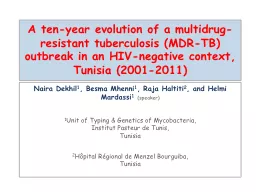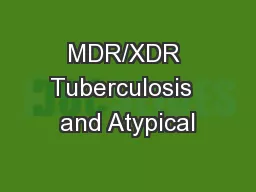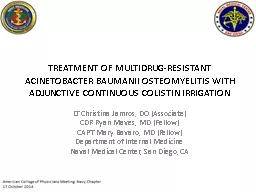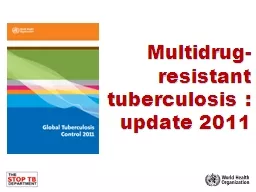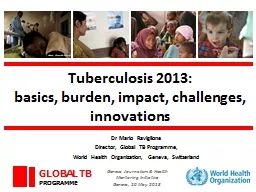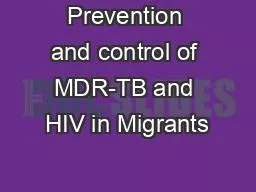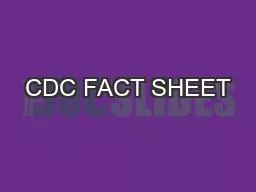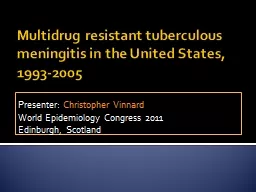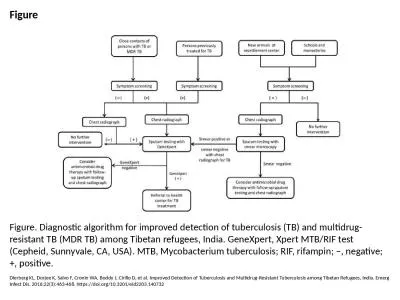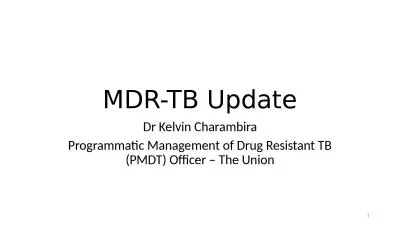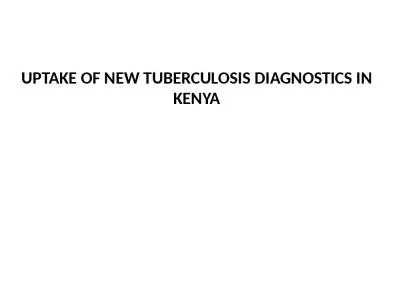PPT-A ten-year evolution of a multidrug-resistant tuberculosis (MDR-TB) outbreak in an HIV-negative
Author : luanne-stotts | Published Date : 2018-12-22
Naira Dekhil 1 Besma Mhenni 1 Raja Haltiti 2 and Helmi Mardassi 1 speaker 1 Unit of Typing amp Genetics of Mycobacteria Institut Pasteur de Tunis Tunisia
Presentation Embed Code
Download Presentation
Download Presentation The PPT/PDF document "A ten-year evolution of a multidrug-resi..." is the property of its rightful owner. Permission is granted to download and print the materials on this website for personal, non-commercial use only, and to display it on your personal computer provided you do not modify the materials and that you retain all copyright notices contained in the materials. By downloading content from our website, you accept the terms of this agreement.
A ten-year evolution of a multidrug-resistant tuberculosis (MDR-TB) outbreak in an HIV-negative: Transcript
Download Rules Of Document
"A ten-year evolution of a multidrug-resistant tuberculosis (MDR-TB) outbreak in an HIV-negative"The content belongs to its owner. You may download and print it for personal use, without modification, and keep all copyright notices. By downloading, you agree to these terms.
Related Documents

